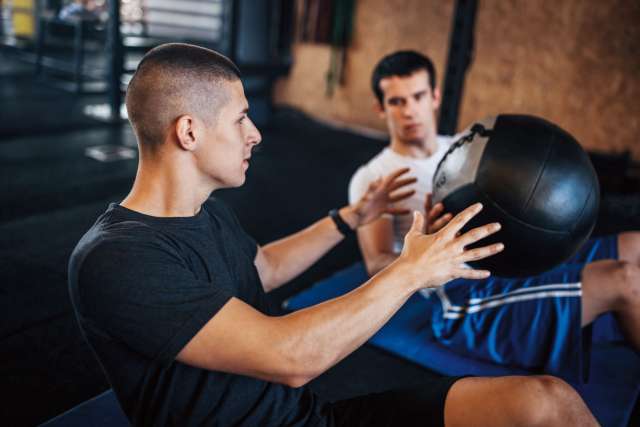With the warm months of summer upon us, many weekend warriors are taking to nearby fields and parks for some athletic recreation. However, many would-be athletes forget that as they get older, it takes more work to keep the body in tune for strenuous activity. That may be particularly true for those who played competitive sports in college or high school, potentially leading to moderate-to-serious injuries.
“Unfortunately, many of us fall victim to the weekend-warrior mentality,” says UCLA Health orthopaedic surgeon Kristofer Jones, MD. “We work hard all week and try to compress or make up for lost time on the weekends by engaging in physical activity that our bodies may not be accustomed to handling.”
To prepare for this summer’s sports season — and for the coming seasons of fall and winter sports, as well — Dr. Jones, who also is head team physician for the Los Angeles Lakers and a team physician for UCLA athletics, recommends a core-strengthening program to help avoid injuries.
Core exercises are essential for athletic performance and decreasing the chance of injury. The body’s core is more than just the abdominals, as most people mistakenly believe. The core includes the pelvis, hips, lower back, mid back, neck and chest, as well as the abdominals. The primary function of the core is to stabilize the spine and keep it from bearing too much weight, helping to transfer weight between the lower and upper body. Having a weak core could result in a person relying too much on their shoulders or arms when, for example, throwing a ball or swinging a bat playing softball or baseball, potentially resulting in injury.

“While injuries in professional athletes tend to be the result of overuse secondary to prolonged, repetitive participation in a certain sport, this isn’t the case with recreational athletes,” Dr. Jones says. “With long periods of inactivity interspersed with short amounts of vigorous physical activity, we place ourselves at risk for various injuries due to the introduction of load/stress that our bodies are not accustomed to. If you have not participated in a sport for a long period of time, it can be quite helpful to begin by incorporating activities that improve neuromuscular control. A collection of activities focusing on things like balance, plyometrics (speed and jumping exercises) and agility can be added to a regular strength and mobility program to provide a nice foundation for reintroducing your body to a sport,” Dr. Jones says.
Dr. Jones encourages most patients to engage in physical activity, but he also cautions that they also should pay close attention to their bodies and adapt to what their bodies can tolerate. “I encourage my patients to play sports, but instead of participating three-tofour times per week, perhaps consider mixing in other activities that place a different load or stress on the body to help avoid injury,” he says.
And he recommends that any older adult considering becoming active in a recreational sports league first consult with their physician, especially if they’ve had a previous injury. “If you have a preexisting musculoskeletal injury, elbow tendonitis, knee arthritis or a chronic ligament injury, it would be wise to consult with a sports medicine physician to determine if a brace or other supplemental gear would be useful to support the body in a way that avoids exacerbation of that injury,” Dr. Jones says.

